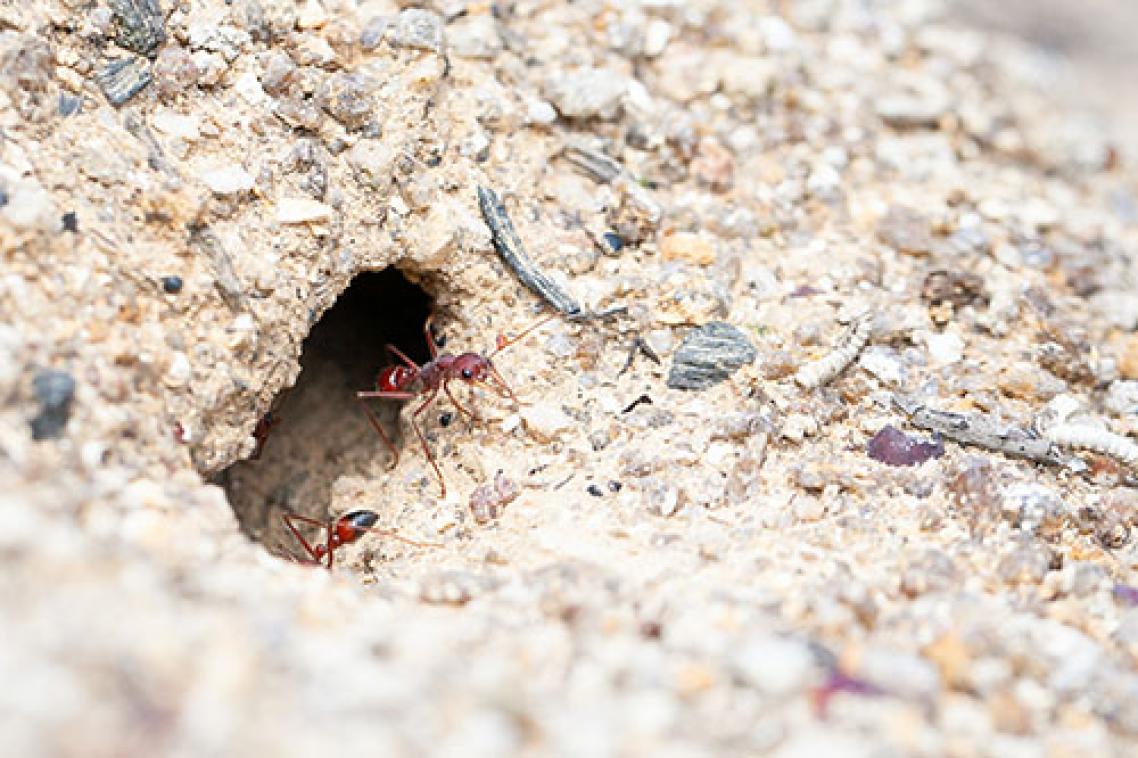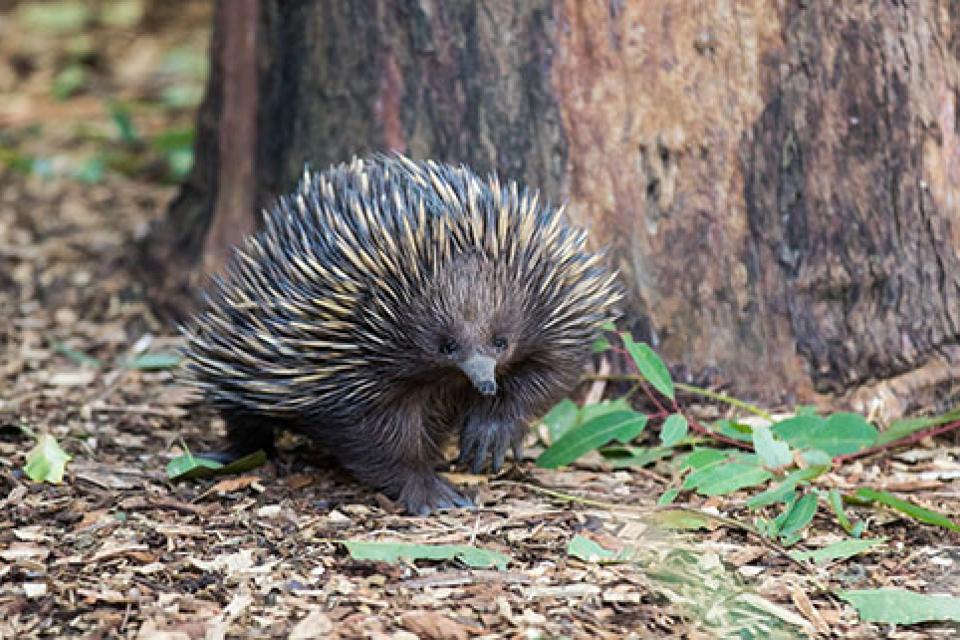Bull ant evolves new way to target pain

Australian bull ants have evolved a venom molecule perfectly tuned to target one of their predators – the echidna – that also could have implications for people with long-term pain, University of Queensland researchers say.
Dr Sam Robinson and David Eagles from UQ’s Institute for Molecular Bioscience found a bull ant venom component that exploits a pain pathway in mammals, which they believe evolved to stop echidnas attacking the ant’s nests.
“Venoms are complex cocktails and while bull ant venom contains molecules similar to those found in honey bee stings which cause immediate pain, we also found an intriguing new molecule that was different,” Dr Robinson said.
Whilst searching databases for similar amino-acid sequences, Dr Robinson found that the molecule matched the sequence of mammalian hormones related to Epidermal Growth Factor (EGF), and of these, was most closely related to that of the echidna.
“We tested the venom molecule on mammalian EGF receptors and it was very potent – this convinced us that the venom molecule was there to defend against mammals,” he said.
“We went on to show that while it didn’t cause direct pain, the molecule did cause long-lasting hypersensitivity.
“Many small carnivorous marsupials, like bandicoots, eat individual ants, but only the echidna is known to attack bull ant nests and target their young – we think that making the echidna sensitive to pain, in tandem with the immediate ‘bee-sting’ pain, may dissuade it from returning to the nests.

The team believes the links between EGF signalling and chronic pain are building momentum and is confident this study could inspire new ways to treat long-term pain.
EGF-inhibitor drugs are readily available on the market and used in anti-cancer therapy to slow tumour growth, with evidence suggesting patients that take them experience less long-term pain.
“We hope that by highlighting the role of this signalling pathway in pain, we can encourage different strategies for pain treatment, especially long-term pain for which treatment is currently limited,” Dr Robinson said.
This research was published in PNAS (DOI: 10.1073/pnas.2112630119), and funded by the Australian Research Council, the Australian National Health and Medical Research Council and the Norwegian Research Council.
Image above left: Adobe Stock
Media: Dr Sam Robinson, s.robinson@imb.uq.edu.au; IMB Communications, communications@imb.uq.edu.au, +61 (0)457 576 843.
Related articles

Nature versus nurture question addressed in landmark study

Anyone can be a hacker with AI – so what does that mean for the cyber defence industry?
Media contact
UQ Communications
communications@uq.edu.au
+61 429 056 139
